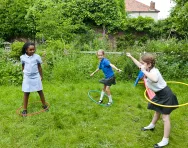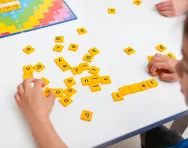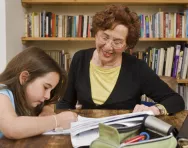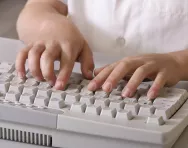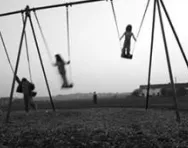Important update from TheSchoolRun
For the past 13 years, TheSchoolRun has been run by a small team of mums working from home, dedicated to providing quality educational resources to primary school parents. Unfortunately, rising supplier costs and falling revenue have made it impossible for us to continue operating, and we’ve had to make the difficult decision to close. The good news: We’ve arranged for another educational provider to take over many of our resources. These will be hosted on a new portal, where the content will be updated and expanded to support your child’s learning.
What this means for subscribers:
- Your subscription is still active, and for now, you can keep using the website as normal — just log in with your usual details to access all our articles and resources*.
- In a few months, all resources will move to the new portal. You’ll continue to have access there until your subscription ends. We’ll send you full details nearer the time.
- As a thank you for your support, we’ll also be sending you 16 primary school eBooks (worth £108.84) to download and keep.
A few changes to be aware of:
- The Learning Journey weekly email has ended, but your child’s plan will still be updated on your dashboard each Monday. Just log in to see the recommended worksheets.
- The 11+ weekly emails have now ended. We sent you all the remaining emails in the series at the end of March — please check your inbox (and spam folder) if you haven’t seen them. You can also follow the full programme here: 11+ Learning Journey.
If you have any questions, please contact us at [email protected]. Thank you for being part of our journey it’s been a privilege to support your family’s learning.
*If you need to reset your password, it will still work as usual. Please check your spam folder if the reset email doesn’t appear in your inbox.
Leaving your child home alone: when is it safe?

As our children grow older, we all have to make decisions about how much independence to give them. One of these is deciding when it’s safe and appropriate for them to be left at home on their own.
‘Leaving your child home alone can be a difficult decision, as children mature at different rates,’ says Helen Westerman, NSPCC Service Head for Local Campaigns.
‘There’s no one-size-fits-all answer.’


Claim four puzzle packs today!
- KS1 & KS2 Word Puzzle Packs
- Numeracy Puzzle Packs for KS1 & KS2
- Challenging and exciting | Boost key skills
Leaving your child home alone: what the law says in the UK
There’s no legislation setting out how old a child should be before they can be left at home alone.
However, it’s against the law to leave them at home if it places them at risk, and you could be prosecuted if leaving them is likely to cause ‘unnecessary suffering or injury to health.’
The NSPCC suggests that:
- Babies and toddlers should never be left home alone.
- Children under 12 shouldn’t be left home alone for long.
- Children under 16 shouldn’t be left home alone overnight.
- Children should never be left alone in a home that could put them at risk – for example, with no electricity or water, or with dangerous items.
How do you know if your child is ready to be left at home alone?
With no laws prescribing the age at which children can be left home alone, it’s up to you as a parent to decide when your child is ready to be left.
Age is less important than maturity: for example, a sensible 12-year-old may be more mature and responsible than a slightly wayward 14-year-old.
You might want to consider things like:
- How long will you be away for, and at what time of day?
- Will you be able to check in on them by phone or text while you’re out?
- Do you trust them not to do anything potentially dangerous like lighting a candle or trying to use the oven?
- Do they know how to keep themselves safe if they go online?
- Are there any hazards in your home that could put them at risk?
- Would they know what to do in an emergency?
- Do they feel confident about being home alone?
‘Parents are best placed to know what’s right for their child, but it’s important to think carefully and use common sense when deciding if they would cope,’ advises Helen.
‘It’s important to build their independence at their own rate, and check how they’re feeling about being left home alone.’
This may not be the same every time: for instance, your child might feel happy to be left for an hour on a bright and sunny afternoon, but not on a dark winter’s evening
It’s sensible to gradually build up the time you leave your child for. You might try a 15-minute stint while you pick a sibling up from a club first, and extend the time as they – and you – feel more confident.
Remember, the decision you make doesn’t have to be set in stone. If you try leaving your child at home but find yourself worrying excessively, or if they get upset or don't follow your ground rules, it’s perfectly okay to go back a step and try again when they’re older.
What ground rules should you set?
‘When you’re leaving your child alone, it can be helpful to agree rules and practise what to do in an emergency,’ says Helen.
These will depend on you and your child but you might discuss:
- What are they going to do while you’re out?
- What will they do if someone knocks on the door?
- Are there any things that they’re strictly banned from doing – for example, using the oven or the trampoline?
- Are they allowed online, and if so, are there any games or websites that they mustn’t use when you’re away from the house?
- What would they do in an emergency? It can help to put together a safety plan for certain situations like an injury or a fire – it’s highly unlikely that they’ll need it, but it pays to be prepared.
- How will they contact you if they need to?
Can they look after a younger sibling?
Again, there’s no legislation or official guidance on this. You’ll need to take into account factors like the age and maturity of both siblings, how much care the youngest will need (you probably wouldn’t want to leave a 12-year-old with a toddler, or let your child look after a sibling with additional needs, for example), and whether they’ll be able to get along while you’re out.
Remember that your children are still your responsibility when they’re home alone together, and if anything goes wrong, you’ll be liable.
What about babysitters?
The decision to leave your child with a teenage babysitter – or let them babysit others, depending on their age – is a personal one. There are no restrictions in law, but babysitters under 16 are too young to be held legally responsible if something happens to your child, and you could be prosecuted for neglect.
If you’re thinking about using a teenage babysitter, or letting your teen babysit, make sure that they know what to do in an emergency, and are mature enough to cope if it arises.
If possible, let a neighbour or friend know that you’re going to be out and ask them to be on call if the babysitter needs help and you can’t get home quickly.
What do other parents think?
‘I have four children, aged 21, 18, 11 and five. I was happy to leave my eldest at home for 30 minutes max at around age 11, but my 18-year-old has mild dyslexia and Asperger’s and he was nearer 14 before I felt comfortable leaving him. I would comfortably leave my 11-year-old at home for half an hour if he stayed upstairs, but as a parent, you should know your child well enough to make that decision.’
Sharon Wilkinson
‘Every child is different. I think leaving a child of 11 or 12 at home for up to an hour would be fine, but not if there are younger siblings in the house, and obviously some children at that age wouldn’t be okay. It’s something that’s up to parents’ discretion as we know our children best.’
Lynda Whitehead
‘My 14-year-old was okay being left for an hour from about 10. He’s very capable and mature, but he was only happy being left during the day: from dusk onwards, he wasn’t keen on being left until about a year ago. My seven-year-old would be perfectly happy being left on his own, but I wouldn’t be happy: he’s very confident and I’d worry that he’d try to cook pizza on his own! But I leave him with his older brother and between them they’re quite happy.’
Emma Bennett
The NSPCC has a useful tool to help you decide when it’s safe for your child to be home on their own, and how to find alternatives if they’re not ready.
